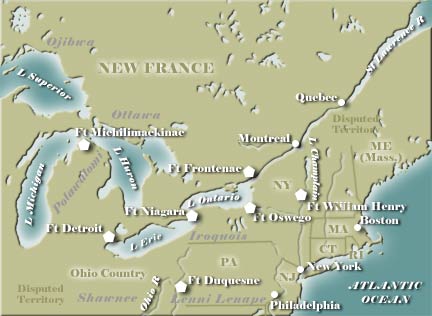The Middle Phase
Formal war was declared between Britain and France in 1756, and a small colonial conflict was transformed into a world war. Effecting a reversal of past alliances, Austria sided with France and Britain with Prussia.
In North America the string of British failures continued with the loss of Fort Oswego to the French in 1756. Louis Joseph, the Marquis de Montcalm, arrived as the new French commander and successfully pushed southward along Lake Champlain and Lake George. Fort William Henry fell in 1757, a French victory that left Albany exposed.

Things were equally dire in Europe and Asia. In 1757, it appeared to many that France and Austria were on the verge of a great victory that would significantly reduce British power throughout the world. Nonetheless, the underlying strength of the British indicated a different outcome. By 1757, the French fielded a North American army of slightly more than 10,000 men, about equally divided between regulars and Canadian militia; the Indian allies were undependable by this point. The British, on the other hand, had 20,000 regulars and an equal number of militiamen. The overall population of British North America was about 10 times that of New France, and the French were impaired by longer and more exposed lines of supply.
A great
turning point occurred in 1758 after
William Pitt had taken full control of the British war effort.
See
French and Indian War Timeline.
See also
Indian Wars Time Table.
